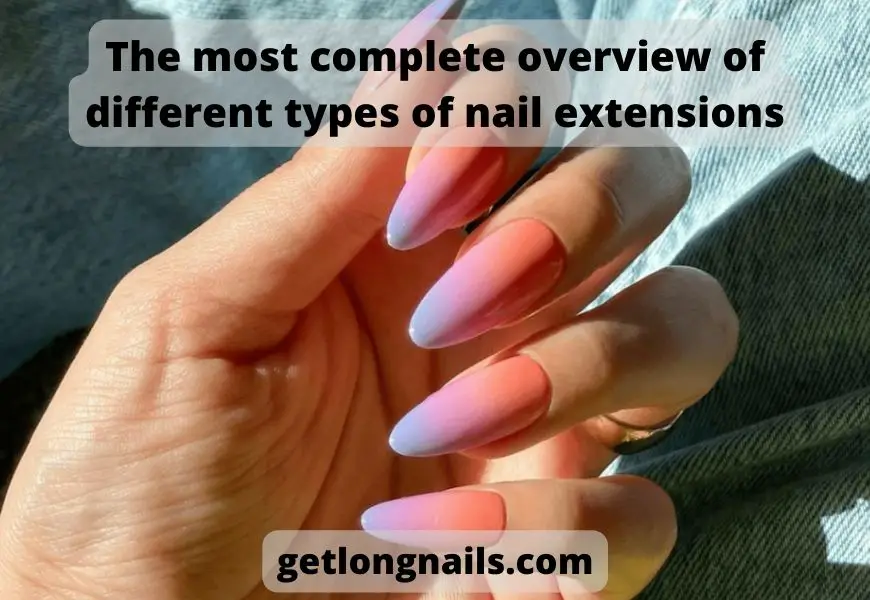What is the different types of nail extensions? Manicure is an essential item in the self-care process of a modern person. The level of grooming is determined by the condition of the hands and nails. Even with a naturally poor condition of nails, an unattractive appearance of the nail plate, or the impossibility of obtaining the desired length, all this can be corrected by nail extensions.
Nail extension is not a new technique in manicures; it has existed for a long time. But with the advent of new materials and techniques, every year it develops and undergoes significant changes. Consequently, there are new methods of nail extension that should be explored before going to a beauty salon.
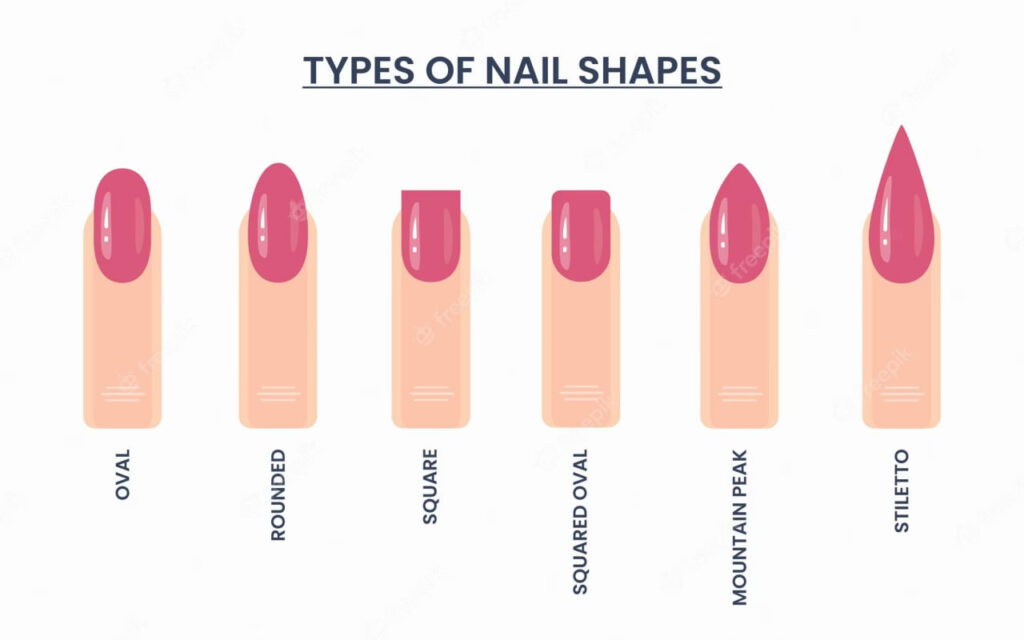
What types of nail extensions exist? What are their differences, advantages, and disadvantages? Is it possible to remove the extended nails at home? How long does the nail extension last? Do the extended nails look like natural nails?
You will find answers to these and other questions in this article.
What is nail extension?
Nail extension is a procedure for increasing the length of nails or changing their shape by applying and laying out artificial materials in a particular way.

A lot of people associate nail extensions with excessively long nails. This is just a false idea of this procedure. The client can choose absolutely any length for extension, for example, natural, emphasizing the natural beauty of nails.
Creative folks can choose longer nails, providing additional space for nail art.
Why do people choose nail extensions?
There are several reasons why we choose nail extensions in beauty salons:
- Personal preference. A person likes the long shape of nails, but natural nails are not able to grow to the desired length.
- Correction of the natural nail shape. Sometimes a complex nail shape or a shape that does not suit a person becomes a problem.
- Biting nails. Getting rid of a bad habit can be a reason.
- Special occasion. A special event awaits ahead—a wedding, birthday, or anniversary.
What are the types of nail extensions?
Depending on the type of material, the following types of nail extensions are distinguished:
- Acrylic nail extensions
- Hard gel nail extensions
- Polygel nail extensions
- Express nail extensions
- Fiberglass nail extensions
- SNS nail extensions
- Silk wrap nail extensions
Acrylic nails
The acrylic nail extension is among the most recognizable methods of extending nails. A monomeric solution mixed with acrylic powder is applied to the nail with a special brush.

The acrylic extension is quite strong and durable, it is perfect for clients who prefer extra-long nails.
Pros of acrylic nails
Acrylic nails last longer than gel nails; they can keep their shape for about 4 weeks.
The majority of nail technicians have experience working with acrylic. That is why this technique of extension is available everywhere.

Acrylic powder is colorful, so different nail designs can be created with it.
It is not difficult to spot nail extensions that are formed with acrylic. Various designs can be created on them: ombre nails, marble, and deep French smile lines.
Acrylic is a nice choice when the nails are fragile, as it can reinforce them.
Cons of acrylic nails
Acrylic extensions need to be removed properly; otherwise, they can damage the natural nail plate.
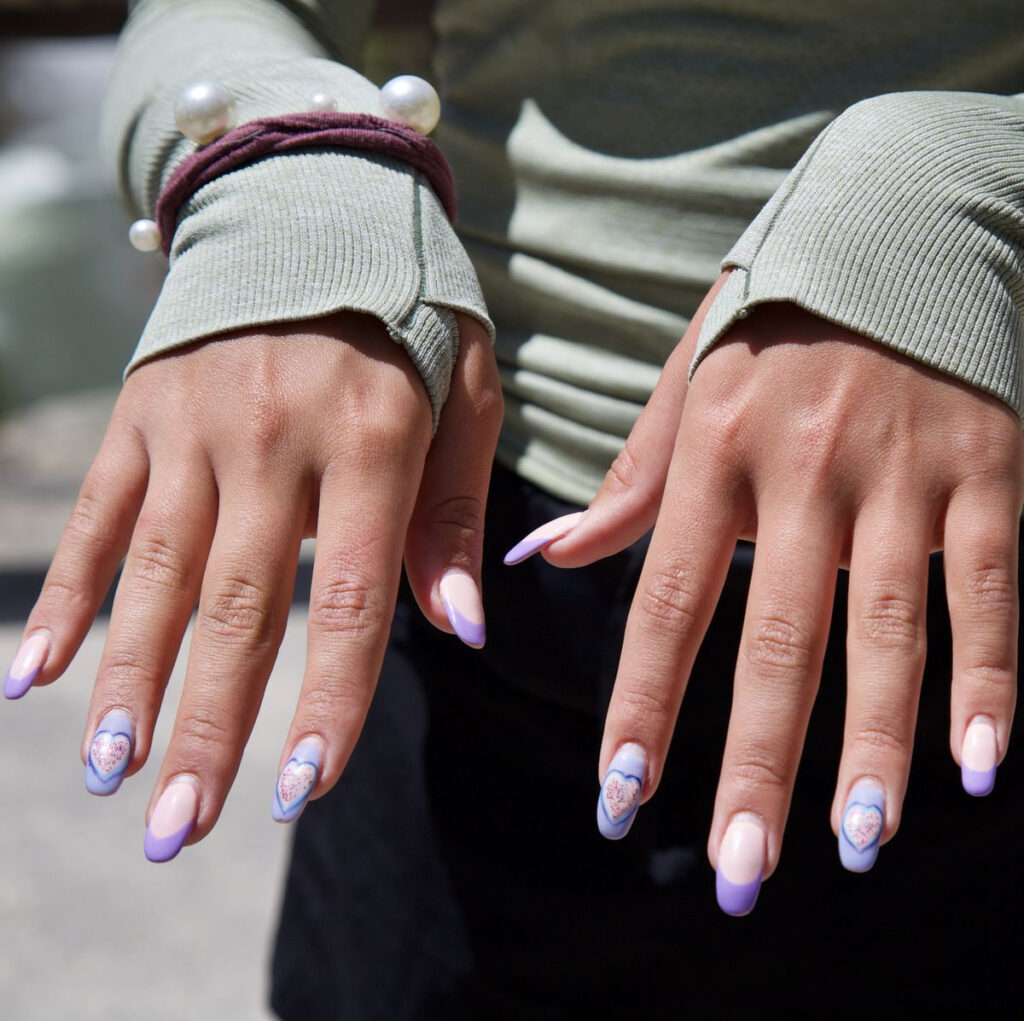
With insufficient master’s experience, acrylic nails may look unnatural.
The liquid component of the acrylic mixture has a strong smell, which can be unpleasant to the client and requires work in a well-ventilated room.
Acrylic extensions can be destroyed by acetone or other chemical substances in the process of wearing a manicure.
Hard gel nails
A hard gel nail extension is described as a natural nail overlay. Sold in containers, it has the texture of a very thick varnish. It is applied to forms or tips and dried under a UV/LED lamp. In comparison with acrylic, hard gel is less harmful, looks more natural, and does not have any smell.
Pros of hard gel nails
Gel extensions do not have an intense, unpleasant odor.
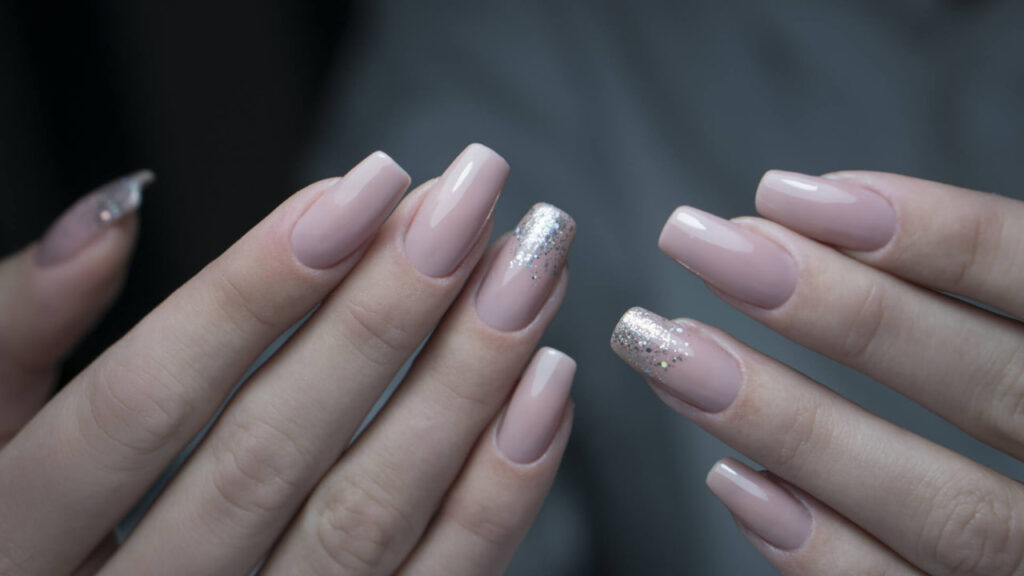
The hard gel can be a different colour. So, the most common designs can be employed here. Most nail artists do the following: they build nail extensions with the gel, and afterward they create art on top with gel polish.
The hard gel nail extension looks more authentic, is more flexible and slimmer than the acrylic nail extension.
Cons of hard gel nails
It is suitable only for short or middle extensions.
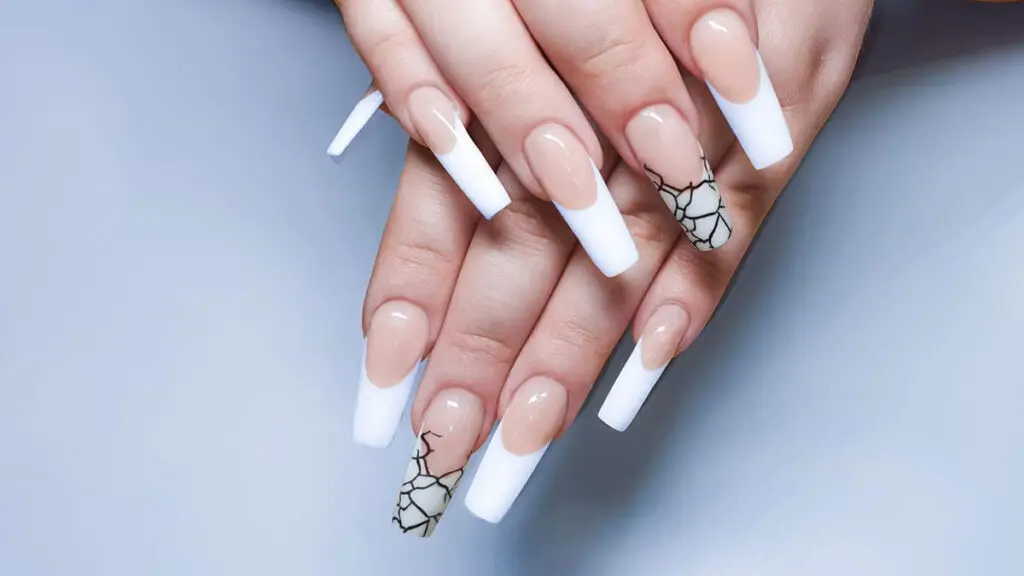
A UV/LED lamp is necessary for hard gel nail extensions. A burning sensation and, in the worst case, a nail burn can be caused by heat spikes during the curing process.
The hard gel can penetrate the nail structure and cause allergies.
Polygel nails
Polygel is a combinationof acrylics and hard gel’s features. It is useful for creating nail extensions, mending a broken nail, or strengthening natural nails. Polygel comes in a pot or a tube and has a dense texture.
Pros of polygel nails
Polygels are strong and flexible, but at the same time, they are light and look natural.

Polygel is easy to work with. The polygel nail extensions are odorless and do not cause any allergies.
Cons of polygel nails
There is a small choice of colours that can be used to make a nail design.
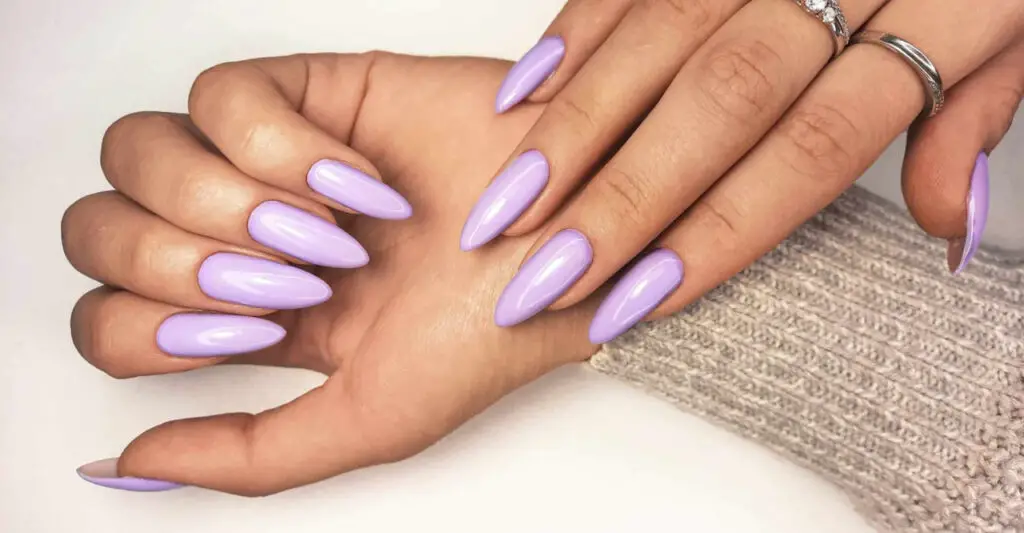
A UV/LED lamp is necessary for polygel nail extensions. Heat spikes during the curing process can cause a burning sensation.
Express nails
The least time-consuming and easiest way of forming nail extensions is the express nail extension. A full-coverage tip and gel are used by a nail technician for that method of extension.
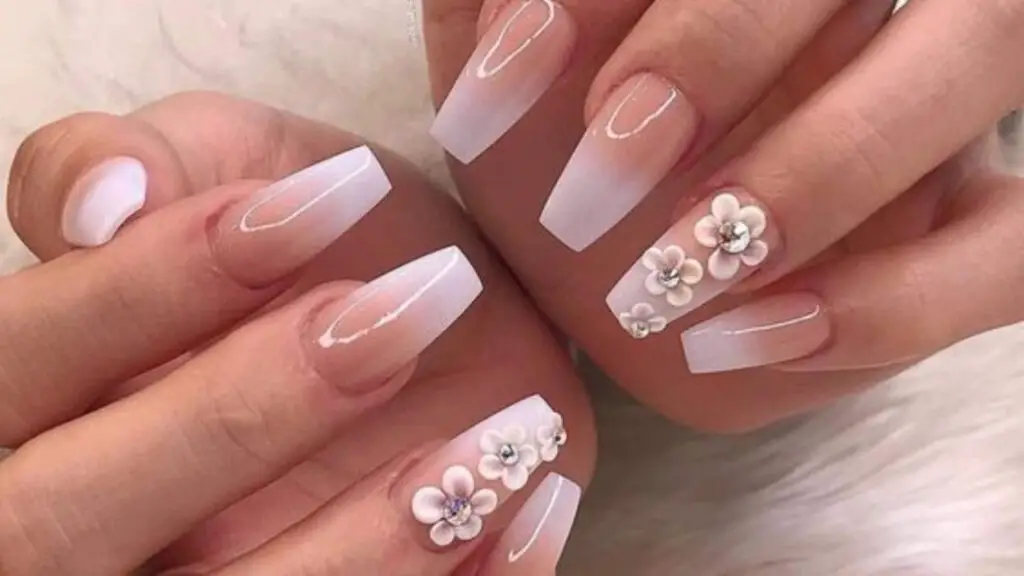
The gel is applied beneath the tip after it is pushed onto the nail and is cured under a lamp. The idea of express nails is similar to fake nail extensions, but a gel is used instead of nail glue.
Pros of express nails
Express nails aren’t complex to do. And fast.
There is a variety of ready-made forms for a nail tech.
Cons of express nails
That type is not so resilient or solid.
The tape needs to match the original nail form of the client; it cannot be adjusted to the size.

The tip is transparent, so to color the top, a gel polish manicure is a necessary thing to do.
Fiberglass nails
For that type of extension, fiberglass is employed as a base form, which is covered with hard gel. The fiberglass method is preferable for short or medium square extensions.
Pros of fiberglass nails
Fiberglass nails look similar to natural nails and are rather durable and, at the same time, not thick.

That extension is a good choice for fixing a broken nail.
Cons of fiberglass nails
It is hard for a nail technician to obtain the intended shape and length with fiberglass.
Long nails cannot be built with such material.
SNS nails or dip powder nails
Dip powder is a particular layer for short nail extensions or as a natural nail overlay. That system is not suitable for raising the nail bed or adjusting the nail structure. A nail tech dips the client’s nails in the powder, skipping gel polish.
Pros of SNS nails
SNS nails are easy and quick to do.
Dip powder makes nails stronger.

Such extensions can be removed with acetone.
There are different available colours of powder, so nail technicians can make beautiful manicures even sans gel polish.
Cons of SNS nails
A good-quality manicure needs several coatings to make a nail thick, that’s why a lot of powder is used for each client.
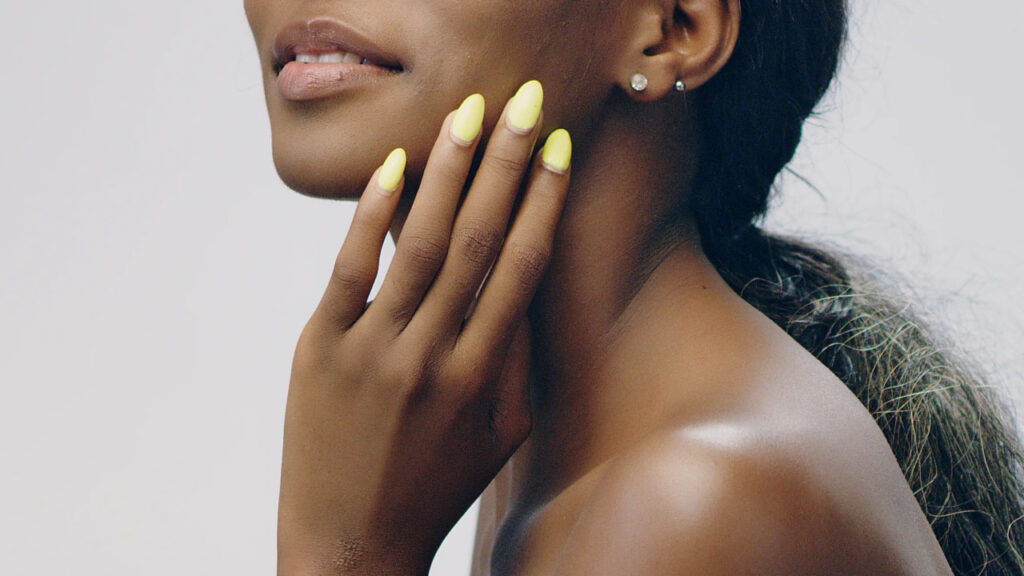
SNS nails are not suitable for medium and long extensions.
Silk wrap nails
Silk nail extension is ideal for fixing a broken nail, strengthening nails, or providing a short extension. Firstly, resin is used to glue silk on the nail after it is activated with spray, and finally, the silk is reinforced with hard gel.
Pros of silk wrap nails
Silk makes nails stronger and looks natural.
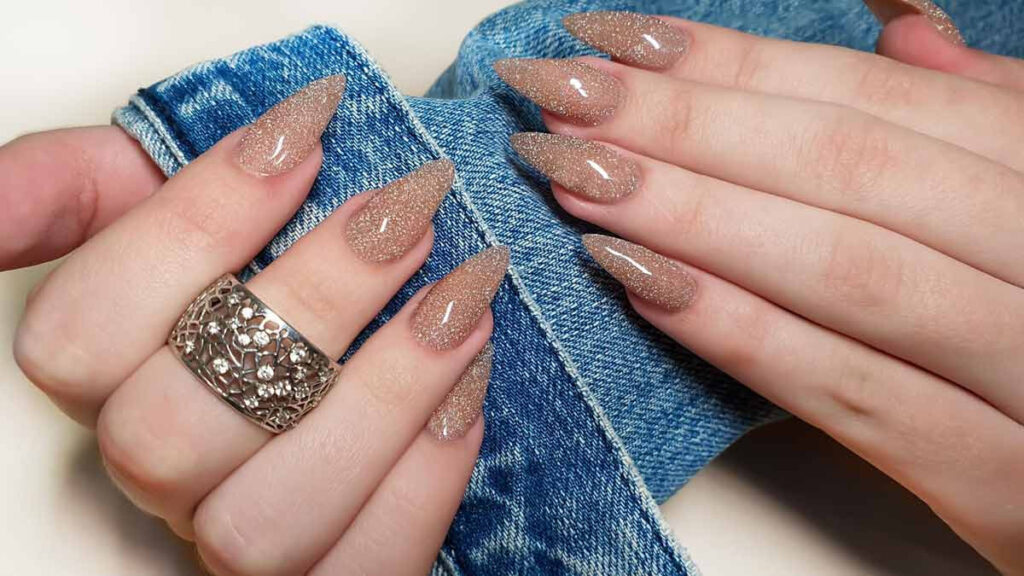
Gel polish and nail art can be applied by the nail artist on the top.
Cons of silk wrap nails
There is a limited number of functions that it provides – mending a broken nail or strengthening a nail plate.

This technique is outdated.
Conclusion
Nail extensions do not lose their popularity in the modern beauty world. Therefore, in this article, we have analyzed the main types of nail extensions so that you, as a client of a nail salon, understand them and know which type of extension is right for you and meets your needs, preferences, and lifestyle.
Choose qualified and constantly developing professionals who will ensure the beauty and health of your nails. But do not forget to attend to your nails yourself.
To get rid of the nail enhancements, it is better to contact a nail master. Do not forget about applying care products to the skin of your hands and nails and do not miss your regular nail appointments.
FAQ
Which type of nail extension is best?
There is no one best type of nail extension for everybody. The choice depends on the desired result, nail health, and individual preferences.
For example, if you want very long and resilient nails, opt for acrylic nail extensions. Gel extensions will be a viable option if you want your nails to look authentic and light. If, by accident, you get a broken nail or your nails generally lack strength, go for fiberglass or silk nails.
Ultimately, the “best” nail extension method depends on your personal preferences, the condition of your natural nails, and the expertise of your nail technician. It is advisable to consult a professional nail technician who can assess your nails and recommend the most suitable extension method for you.
What is the healthiest nail extension method?
None of the nail extension methods discussed earlier in the article can be damaging to your nails. The health and beauty of your nails in the process of building up depends on several conditions: proper nail preparation, skillful application, regular maintenance, gentle removal, and a nail care routine.
What is the most popular nail extension?
Currently, the most popular nail extension method is gel extension. It has gained significant popularity due to its natural-looking finish, durability, and flexibility. This method involves applying a gel product onto the nails and curing it under a UV/LED lamp.
Gel extensions provide a glossy finish, and they can be easily shaped and modified to create various nail designs. They are also less likely to lift or chip compared to other methods.
Which is better: acrylic or gel nail extensions?
There is no clear answer to which of these methods of nail extension is better. Again, the choice depends on the desired result and the personal preferences of the client.
If a client prefers a natural finish, rather good durability, medium or not-so-long nails, and does not mind curing under a lamp, they are most likely to choose gel nails.
If a client prefers long nails, strong durability, and does not mind a thick result and a lack of flexibility, they are most likely to choose acrylic nails.

